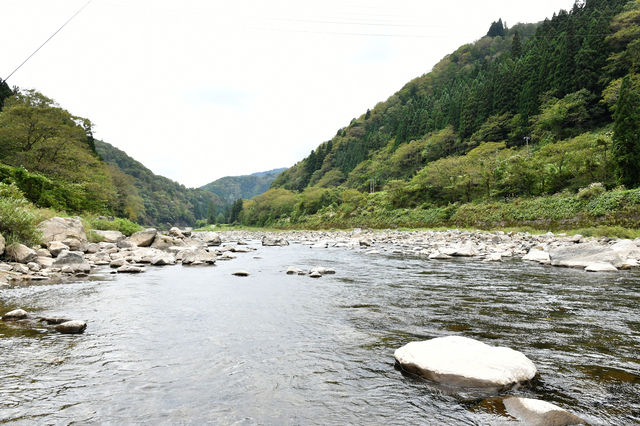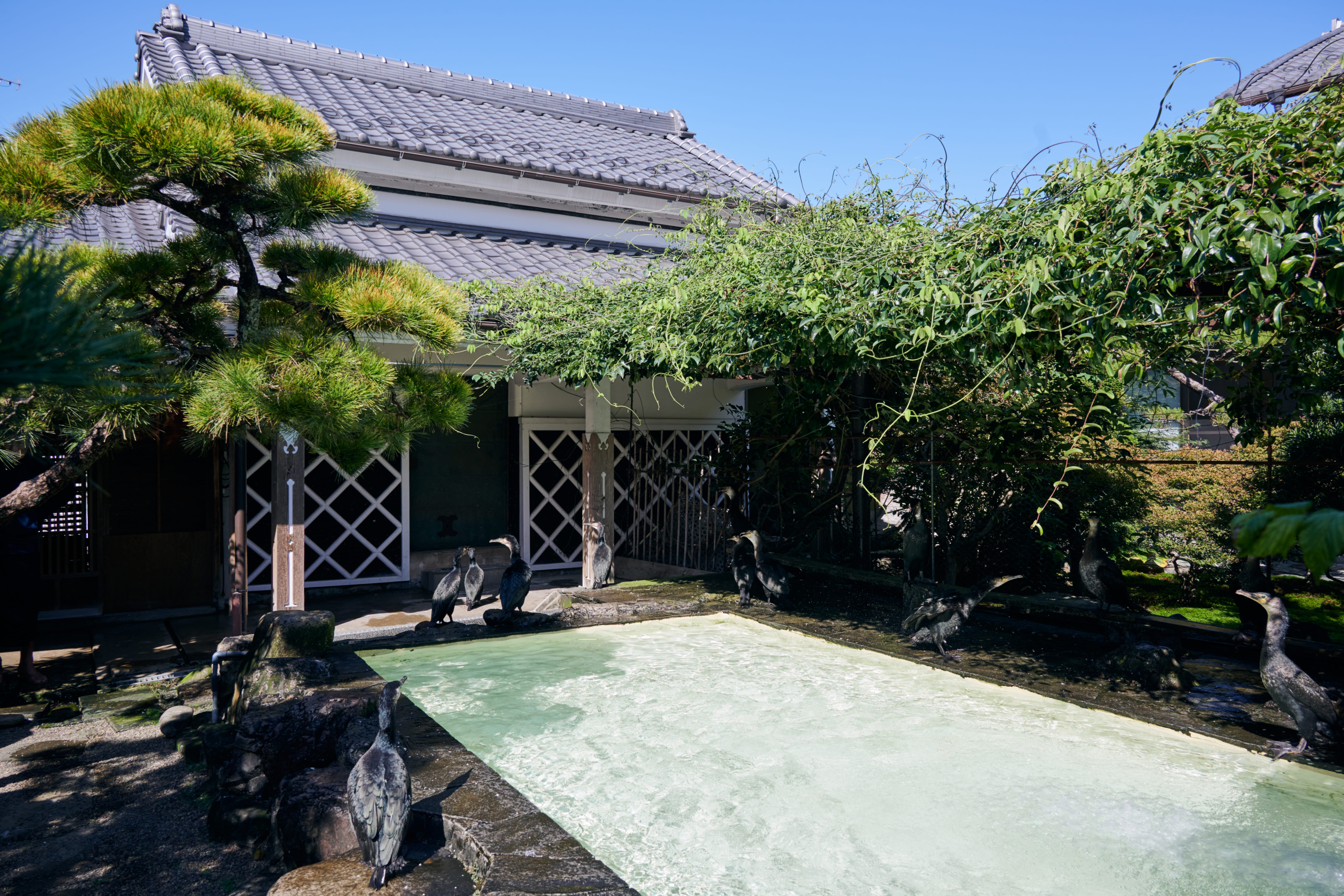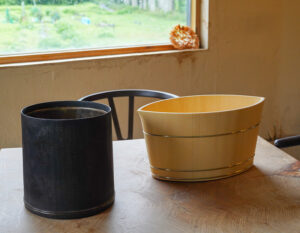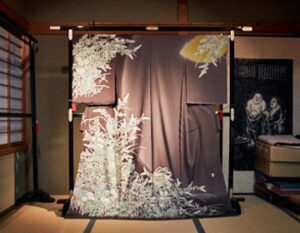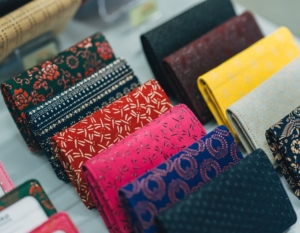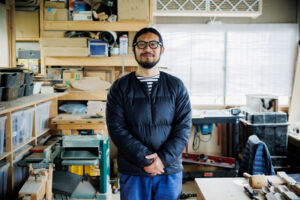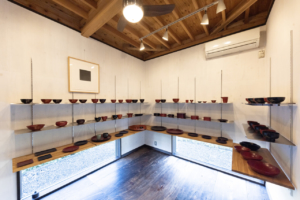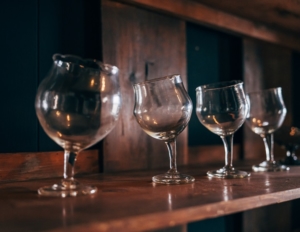Kose Cormorant Fishing, the Tradition of Ayu Fishing
Cormorant fishing is a fishing method in which a cormorant master pulls the reins from the top of a boat and steers the cormorant to catch ayu (sweetfish) and other river fish. The cormorant’s habit of diving into the river and holding the fish it catches in its throat is utilized. The cormorant swallows the ayu as it begins to move, startled by the bonfire lighting up the surface of the water, and catches it. In the silence of the dark night with a pleasant river breeze, the sight of cormorants dressed in traditional costumes, boats lit by crackling bonfires, and cormorants maneuvering their boats to catch the ayu is truly a fantastic sight.
The festival has a long history, dating back 1,300 years in Japan, and is still held in 11 locations throughout the country, including Ehime and Oita prefectures. Of these, the Ose Cormorant Festival in Seki City, Gifu Prefecture, and the Nagara River Cormorant Festival in Gifu City, Gifu Prefecture, are conducted under the protection of the Imperial Household, and nine cormorant masters carry on the tradition under the title of Imperial Household Agency ceremonial cormorant masters. In 2015, the Nagara River Cormorant Fishing Technique was also designated as an Important Intangible Folk Cultural Property of Japan for the first time in Japan. Yoichiro Adachi, the 18th cormorant master in the Adachi family, is the inheritor of the Kose cormorant fishing tradition. While working as a cormorant fisherman during the annual cormorant fishing season from May 11 to October 15, he also runs a Japanese inn, Cormorant House Adachi, in a 300-plus-year-old house that is also a tangible cultural property of the city. After the summer cormorant fishing season is over, I take care of the cormorants every day in preparation for the following year. Cormorant fishing is not only about fishing, but also about feeding the cormorants. I am the only one who can take care of the cormorants, so I can never take a day off. (Cormorants are wild-caught cormorants, so at first they are wary and resistant, not eating their food or biting. By taking care of them every day and reassuring them, they finally get used to it. Because cormorants only feed from people they have become accustomed to, cormorants do not have holidays and cannot go on trips.
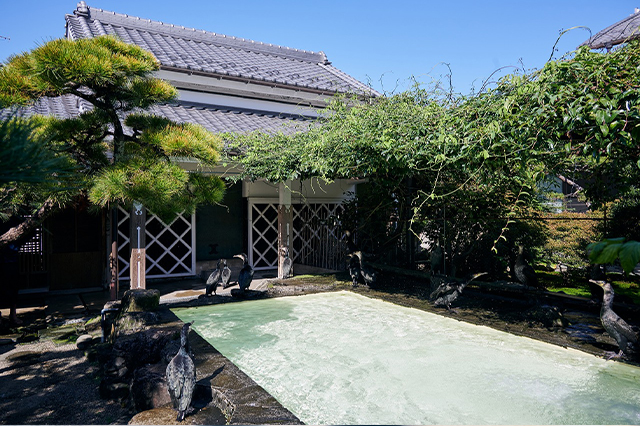
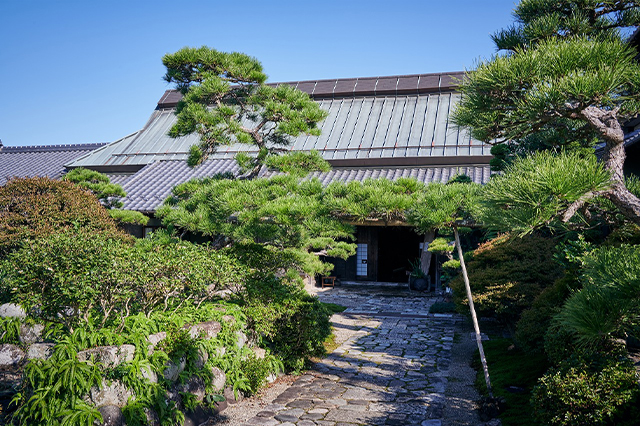
Cormorants of the “Imperial Household Agency Ceremonial Artisanship” passed down from generation to generation
He was also conflicted about his occupation and longed for other jobs when he was a child. 27 years old, he decided to follow in his footsteps, but it was not all glamorous work like the cormorants he saw on TV. He laughs, “There are other ways to catch ayu, but I don’t think I’ve found one that works. There are other ways to catch ayu, but why does cormorant fishing continue? Nakada replied, “Because it is the most efficient way to catch ayu, and the ayu they catch tastes good. One cormorant can hold several ayu in its throat, and the freshness of the fish is excellent because it is caught in an instant with a sharp chopstick. Also, when making stews and other dishes, the cormorant’s bite marks soak up the flavor, making them delicious,” says Adachi.
Although it may seem like a performance for tourists, there is actually a rational reason for this, backed up by 1,300 years of history.
Inside the tasteful main house, there is a box painted with “Goyo” (literally, “Imperial Office”), inside of which is a lantern. There are several in a row that were supplied from the Edo period to the Showa period. In those days, these lanterns were hung over cormorant boats to indicate that the fishermen were fishing with the endorsement of the Imperial Court, the Shogunate, or the government. Because cormorant fishing could not continue without such backing, it has survived with the help of patrons of each era,” said Adachi. In such cases, the backing of the court nobles and other officials allowed the cormorant fishermen to play a special role and be protected. Currently, Mr. Adachi is a ceremonial cormorant fisherman (national public servant) for the Imperial Household Agency, and keeps the tradition alive by conducting the “Imperial Cormorant Fishing” eight times a year at Goryojo, a prohibited fishing area, for the Imperial Household. When the bonfire is very powerful, the sparks from the fire are quite hot, but if the fire is big enough to light in the darkness, ayu fish can be caught, and the sight of the bonfire gives it an air of elegance, and tourists cheer loudly, so I feel that it is worthwhile. That’s why bonfires are the life of cormorants,” says Adachi.
Matsuo Basho composed a haiku poem, “Omoshiro te yamashiki udonohuna kanana,” or “If something disappears, it disappears, and if something continues, it continues,” Adachi muses. As long as there are cormorants who keep the fire burning in their hearts, this mysterious traditional culture will never die out.
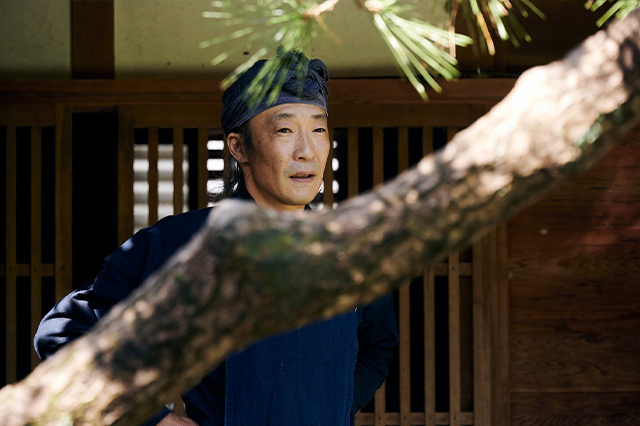
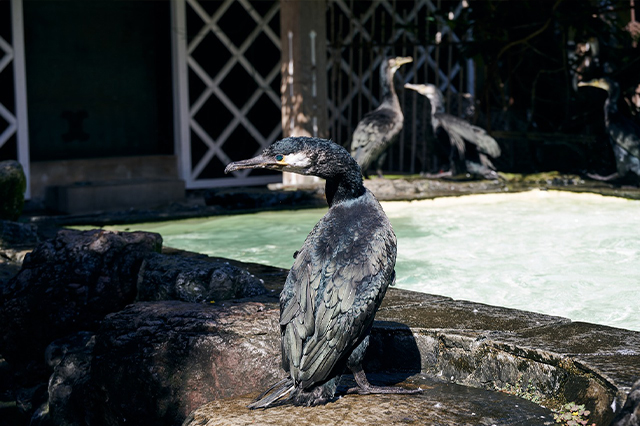
ーーーーーーーーーーーーーーーーーーーーーーーーーー
■Also on TDK VOICES FROM NIHONMONO
Hidetoshi Nakata Gifu Trip: Cormorant Master Yoichiro Adachi
https://www.j-wave.co.jp/original/nihonmono/entry/211107.html
ーーーーーーーーーーーーーーーーーーーーーーーーーー
